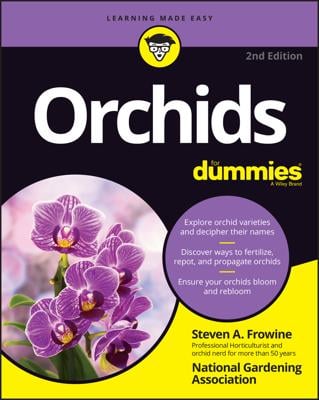Before you wrestle with any insects on your roses, make sure you know what the problem is. For a start, consult the list of common insects in this article. If you need further help, contact a local nursery — the folks there should be familiar with the common problems that affect roses in your area. Nearby botanical gardens and your local cooperative extension office also may be able to help.
Following is a list of the most common insect pests you're likely to find infesting your roses and the best ways to control them:
- Aphids are tiny, pear-shaped pests that come in many colors, including black, green, and red. (See Figure 1.) They congregate on new growth and flower buds, sucking plant sap with their needle-like noses. They leave behind a sticky, sugary substance called honey dew, that may turn black and ugly if infected with sooty mold. Honey dew also attracts ants.
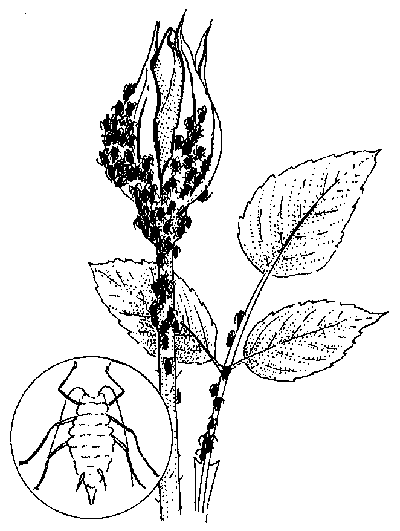
Figure 1: Aphids are attracted to new growth.
- Aphids are easy to control. You can knock them off a plant with a strong jet of water from a hose, or you can spray them with an insecticidal soap. The soap helps wash off sooty mold, too. But usually, if you just wait a week or two, the aphid population boom is followed by a buildup in beneficial insects, especially lady beetles, and these beneficials take matters into their own hands (er, mouths) before serious damage occurs. Malathion, and acephate are traditional chemical controls for aphids. A new product packaged under the name Merit (imidacloprid), is very effective against aphids, and is fairly environmentally friendly. However, it can be hard to find.
- Cucumber beetles are easy to recognize — they're about 1/4-inch long and yellowish green, with black stripes or dots on their backs. Two different types exist. They feed mostly on cucumbers and vegetable plants, but they also love rose blossoms and take big bites out of them just as they open.
- Control is difficult. Try spraying spray with pyrethrum, neem, or insecticidal soap. Parasitic nematodes prey on the soil-borne larvae. Carbaryl is a traditional chemical control.
- Japanese beetles can really be a serious problem east of the Mississippi River. The 1/2-inch long beetles have coppery bodies and metallic green heads. (See Figure 2.) They feed on both flowers and foliage, often skeletonizing the leaves.
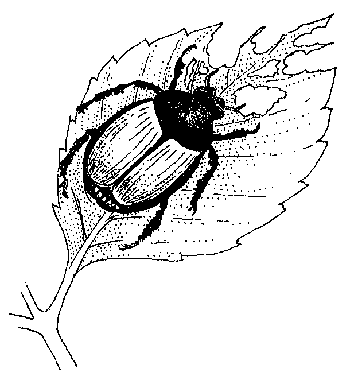
Figure 2: Japanese beetles can skeletonize foliage.
- Control can be tough. Treating your lawn and garden soil with parasitic nematodes or milky spore may reduce the white, C-shaped larvae, but more adults will probably fly in from your neighbors' yards. Milky spore takes years to spread throughout your lawn. Turning the soil in the open areas of the rest of your yard to expose the grubs to birds may also help. Floral-scented traps that attract adult beetles are available, but the traps may bring in more beetles than you had before. If you try traps, keep them at least 100 feet away from your roses.
- Neem, insecticidal soap, and pyrethrum are effective alternative sprays for controlling adult beetles. Traditional chemicals that may help include carbaryl and acephate. You can also just pick them off your roses (late evening is the best time) and or drop them into a can of soapy water.
- June beetles are about an inch long and reddish brown to black. They usually feed at night and prefer the foliage of various trees, but they also feed on roses. Control is the same as for Japanese beetles, but milky spore is not effective against June beetle grubs.
- Caterpillars are the larvae of moths or butterflies. They occasionally feed on the foliage or flowers of roses. You can control them with Bt or by releasing trichogramma wasps (they prey on caterpillar eggs). Acephate and carbaryl are traditional chemical controls that may be effective. Remember, however, that moths and butterflies are essential for pollination. And if you enjoy seeing butterflies in your garden, plant extra roses to account for caterpillar damage.
- Rose midges are small, almost invisible pests that rasp new growth, especially flower buds, causing it to shrivel and turn black. If your rose plants look healthy but do not produce flowers, suspect rose midge. Insecticidal soaps sometimes work. For better control, attack the soil-borne larvae with Diazinon or chloropyrifos.
- Rose chafers are tan-colored beetles with long legs, as shown in Figure 3. Again, control is the same as for Japanese beetles and June beetles, but milky spore is not effective against the grubs.
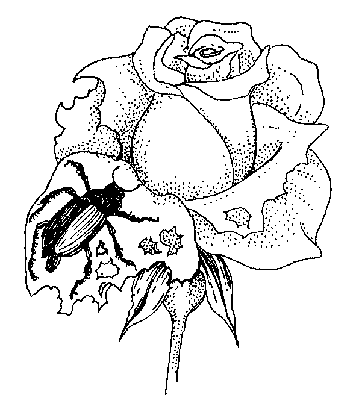
Figure 3: Rose chafers are tan and have long legs.
- Rose stem borers are tiny, worm-like larvae (shown in Figure 4) that bore into recently cut or new canes, and feed inside them, sometimes causing the cane to die. Several different insects can do this kind of damage, and they all are hard to control.
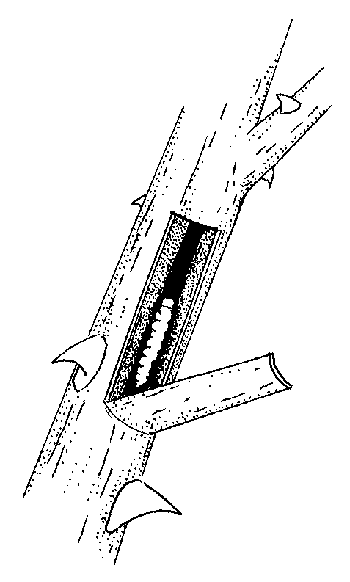
Figure 4: Rose stem borers feed inside newly cut canes.
- Cut off the wilted stem well back into healthy tissue. (You may be able to see a small hole where the borer entered the stem. Cut back below that.) Look to see whether tissue inside the cane is damaged. If so, cut lower still until the inside of the cane is normal. If the borer has reached the base of the cane and bored into the bud union, you may lose the plant. Few sprays of any kind are effective, although you may get some of the larvae as they drop to the ground after feeding by using parasitic nematodes near the base of the plant.
- If borers are really giving you fits, put a drop of white glue (Elmer's style) on the top of the cane after you cut a flower or prune. This keeps out the type of borer that enters through pruning cuts, but not the type that bores directly into new canes and causes them to wilt.
- Spider mites are tiny arachnids that you can barely see without a magnifying glass. If the population gets big enough, you can see their fine webbing beneath the leaves. As the mites suck plant juices, the leaves become yellowish with a silvery stippling or sheen. If things really get bad, the plant may start dropping leaves. Mites are most common in hot, dry summer climates and on dusty plants.
- A daily bath with a strong spray from a hose should keep infestations down. Just make sure you work hardest on the undersides of the leaves. You can control spider mites with insecticidal soaps, which also help to clean off a plant's leaves. Summer oil is also effective, as is releasing predatory mites. If the pests get completely out of control, you may have to use a miticide, such as Avid.
- Thrips are another almost-invisible troublemaker. They feed on flower petals, causing them to become discolored and the buds to be deformed as they open. Thrips like all roses but are particularly fond of light-colored varieties.
- Many beneficial insects feed on thrips, especially lacewings. Insecticidal soaps are also effective, as are several other insecticides, including acephate. Imidaclorid, mentioned previously under aphids, is also effective against thrips.

